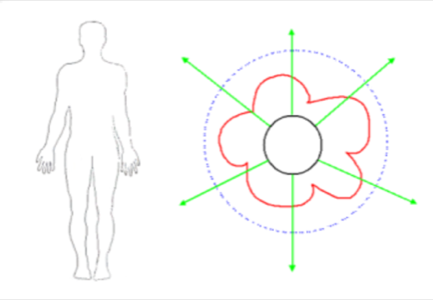
What do you think the above image (which I drew) represents? It’s YOU — as a slave of the popular internet culture and as a participant in the massive user-generated social web. Allow me to describe what all these fancy colors and lines represent:
- Blue Dashed Line is your moment-by-moment outer side, what others see, the obviously apparent things in your life;
- Red Cloudy Thing is the sum of your thoughts, ideas, souvenirs and things in your life (not just momentary);
- Black Inner Circle is your most intimate side, your fears, things that you generally choose to hide from other people;
- Green Arrows represent your relationships and communications with other people.
When you add up all of these things, it is you – the public and private you on the Web. What’s more, there seems to be a trend happening. I call it OpenYou and it signifies that people are getting more and more open on the internet.
Let’s take a look at how today’s popular web sites participate in this social puzzle – what are the sum of the elements that constitute the social web, and are they contributing to a more open you?
Blue Dashed Line – Twitter
Twitter is the new kid on the block, created by the people who developed Blogger.com. Twitter is a simple idea – it’s a way of broadcasting what you are doing to your network. This is exactly what our blue dashed line represents. The aggregation of what you do gives a great insight about your personality. Also, we often wonder what our friends are up to – it’s usually the first thing we ask when we call someone (what are you doing?). Twitter has been a big hit, by satisfying this basic social need.

Red Cloudy Thing – Blogs, Flickr, del.icio.us
With blogs, you share your thoughts and ideas. It’s a great form of self-expression. Photos and links give important information about you too. They constitute your memories; where you were, what you were doing, what you were interested in, what you were thinking of. But as you can see, all these questions are asked in the past tense – because the actuality of these are low. And that’s the thing that differentiates this from Twitter and the blue dashed line. Sites like Flickr, del.icio.us, Blogger, WordPress, Typepad are the main constituents of this space.
Green Arrows – Social Networking
Social networking is actually more about communication than self-expression. Because unlike the previous examples, with social networking the purpose is interaction, finding new friends and showing yourself to others. That’s why we define social networking with green arrows – it’s our direct communication with the outside world. MySpace, Bebo, Facebook are the best known examples of this.
Black Inner Circle – Nothing!
Do you think you’ve taken everything online? No, there is one thing left, a black inner circle – the deepest side of you, your most intimate feelings, your fears, your secrets, your obsessions. This part is the thing that you always hide from others, even from your family maybe; that’s why it sounds like a bad idea to share this too.
Last December, I tried to explore this idea by myself with a Wikipedia-like open source (with database also) project, OpenHuman. After it got Slashdotted, I got over 1200 members – not so bad. And some of them really went so deep that they put their naked picture online. But after some time, the site lost its activity – and the extreme profiles started to drop too.
Conclusion
The inevitable reality is that we get more and more open each day. The limit? Perhaps the black inner circle, perhaps nothing… Perhaps we will completely give up our privacy – and for example we can get all the information about someone online before meeting them in person. We may have ‘Human search engines’, which make everyone easily trackable.
There is a saying that information is power. Some may argue that by opening up yourself, you lose some of your power – that your weaknesses become apparent. Personally I believe in not hiding any information, personal or otherwise. What’s your position on this?










